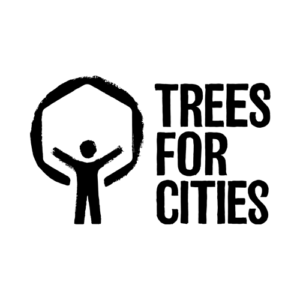Beyond their aesthetic appeal, health benefits, and ecological importance, how do you go about putting an economic value on trees?
In this blog post, we’ll look at some tangible and proven ways that the presence of street trees can benefit our economy.
Street tree Planting – is there a return on investment?
There are costs involved in both planting street trees and in looking after them. In urban areas in particular, it’s crucial that trees are monitored for disease and that branches aren’t allowed to become weak and fall onto people or property. Newly planted saplings or small trees require watering and looking after.
When budgets are tight, any spending has to be carefully considered.
Luckily, we can now get a clear picture of the economic value of trees. According to researchers at the Place-based Climate Action Network at Queen’s University Belfast, the economic benefit of planting a single tree ranges from £1,200 to £8,000, over a period of 50 years.
Here are some of the ways that this figure has been calculated.
Tree-lined high streets are better for retailers

Most of us can appreciate how much more pleasant it is to walk along a tree-lined street, but it turns out that it makes us happier to shop too. Studies show that people will spend up to 12% more on goods or services in areas with large, well-cared for trees. People are even willing to pay more for parking in landscaped car parks.
As well as increasing shopper spending, streets with trees also benefit from reduced crime. In fact, research suggests that for every 10% increase in tree canopy covers, there is a 15% decrease in violent crime and a 14% decrease in property crime, even when taking into account other factors.
Overall, the benefit for retailers is significant!
Trees increase property values
The desirability of living in a leafy neighbourhood is known by house hunters and estate agents alike. It’s reflected in property prices too. Studies in the USA found that the value of properties in a tree-lined area may be up to 18% higher than in similar areas without trees.
It’s notable that underprivileged areas tend to have less tree coverage.
One way that Trees for Streets is trying to address this is by carrying out fundraising activities to support the planting of trees in less affluent areas, including applying for grants and corporate social responsibility budgets. We do this alongside seeking sponsorship donations from members of the public.
Trees provide a boost to the local economy
Trees make our local areas more attractive, which is a known factor in inward investment, encouraging new businesses to open and creating new jobs. The presence of trees creates a more positive, inviting perception for both shoppers and business owners.
In fact, it has been shown that strategically planting 6,000 trees across a large English town would boost the local economy by £48 million over half a century, or nearly £1 million per year. The figures are compelling!
Trees help reduce spending on infrastructure
The economic benefits of trees can also be drawn from the savings they bring on a much wider scale.
For example, when planted near buildings, trees can cut air conditioning use by 30%, and, according to the UN Urban Forestry office, reduce heating energy use by a further 20-50%.
Trees can also capture rainfall on their branches, letting it transpire back into the atmosphere before reaching the ground. At the same time, water runs down the branches and trunk to allow deep root penetration. This means less council spending on drainage infrastructure and a reduction in the threat of flooding to properties and homes in the area.
The shade provided by trees protects the tarmac, helping extend the life of pavements and roads. Another significant cost reduction.
They say that money doesn’t grow on trees, but there is building evidence to show that planting more street trees will boost the economies of our local areas in a very real way. The figures show that the monetary incentives are as real as the environmental!


